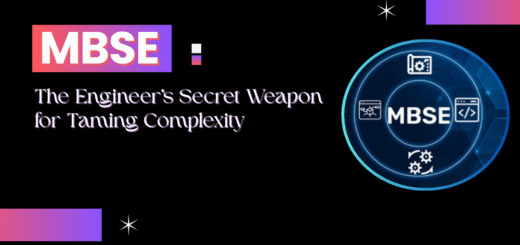Building Your Own Automotive Modeling Language with SysML
Modeling a modern car with generic SysML blocks feels like assembling a Ferrari with Lego bricks. You can do it, but why struggle when you can create custom modeling elements that speak the language of automotive engineers? Here’s how to craft a tailored SysML profile that captures everything from torque curves to crash safety ratings.
Why Generic Modeling Fails for Cars
Imagine trying to specify:
- An EV battery’s thermal runaway thresholds
- A transmission’s shift logic
- ADAS sensor coverage angles
Using vanilla SysML blocks means:
- Manually adding the same properties repeatedly
- No standardized way to enforce safety rules
- Diagrams that look alien to automotive teams
The fix: Create an automotive-specific profile with:
- Predefined component types (e.g., «ECU», «BatteryPack»)
- Industry-standard attributes (ISO 26262 compliance, SAE J1939 parameters)
- Visual cues (icons for powertrain vs. chassis elements)
Step-by-Step: Creating an Automotive Profile
1. Mine Your Domain’s DNA
Start by cataloging what makes automotive modeling unique:
| Component | Must-Have Attributes | Industry Standards |
| Brake System | Response time, pad material | ISO 26262 ASIL Level |
| Li-Ion Battery | Cell chemistry, C-rate | UN38.3 Transportation Safety |
| CAN Bus Node | Message ID, bitrate | SAE J1939 |
Pro tip: Interview your powertrain engineers—they’ll reveal critical attributes you’d never find in textbooks.
2. Define Stereotypes That Matter
Forget theoretical examples. Here’s what actually moves the needle:
text
# Powertrain Module
«stereotype» ElectricMotor
– peak_kW : Real (unit=”kW”)
– max_rpm : Integer
– coolant_type : Enum [Glycol, Oil]
– efficiency_map : Curve // Torque/RPM matrix
# Safety
«stereotype» CrashSensor
– deployment_threshold_g : Real
– iso26262_asil : Enum [A, B, C, D]
– fault_detection_time : Real (unit=”ms”)
Key move: Use enums for standardized values (no free-text fields that invite typos).
3. Bake in Industry Rules
Turn regulatory requirements into executable constraints:
text
«stereotype» ADAS_Camera
constraint {
“Frame rate ≥ 30fps if used for lane detection” :
self.function == “LaneDetection” implies self.frame_rate >= 30
}
This automatically flags designs where a lane camera operates at 25fps.
4. Visual Language Matters
Assign intuitive icons:
- for high-voltage components
- for safety-critical elements
- for communication modules
Result: Engineers glean system intent at a glance.
Real-World Application: EV Battery Pack
Without Profile:
- Generic block with ad-hoc properties
- Inconsistent attribute names (Capacity vs. kWh_rating)
- Manual compliance checks
With Profile:
text
«BatteryPack» MainBattery
– cell_chemistry = “NMC811”
– total_kWh = 95
– iso26262_asil = “D”
– cooling = “Liquid”
Tool automatically:
- Enforces UN38.3 test requirements
- Links to thermal models
- Flags insufficient fault detection
Proven Benefits from Actual Deployments
- Faster Reviews
- Suppliers instantly recognize «ECU» vs «Sensor» stereotypes
- Regulatory Confidence
- ASIL levels visibly attached to components
- Toolchain Integration
- Export attributes directly to:
- MATLAB for control logic
- ANSYS for thermal analysis
- PLM systems for BOM generation
- Export attributes directly to:
Pitfalls to Dodge
- Over-Customization
- Don’t create a «LeftFrontWheel» stereotype—keep it at «WheelAssembly» level
- Tool Lock-In
- Ensure your profile works across Cameo, Enterprise Architect, etc.
- Legacy Mindset
- Train teams to use the profile, not work around it
Get Started Today
- Pick One Subsystem
- Start with something contained (e.g., braking, HVAC)
- Define 3-5 Critical Stereotypes
- Focus on components with unique attributes
- Pilot with a Small Team
- Refine based on feedback before org-wide rollout
Example:
- Subsystem: Thermal Management
- Stereotypes: «Radiator», «CoolantPump», «ThermalSensor»
- Attributes: Flow rate, ΔT max, material compatibility
Final Thought: A well-crafted automotive profile doesn’t just model systems—it embeds decades of engineering wisdom into your diagrams. When a new hire sees a «HighVoltageBus» stereotype, they immediately know:
- It needs clearance markings
- Requires 5mm creepage/clearance
- Must be modeled in your EMI simulation
That’s knowledge transfer you can’t buy.


